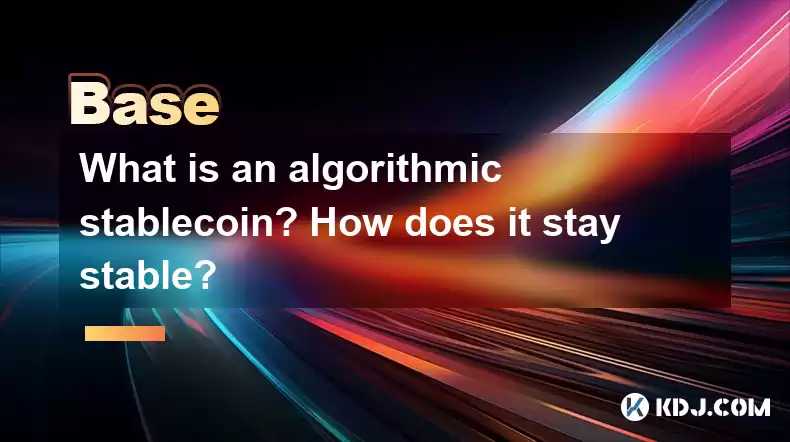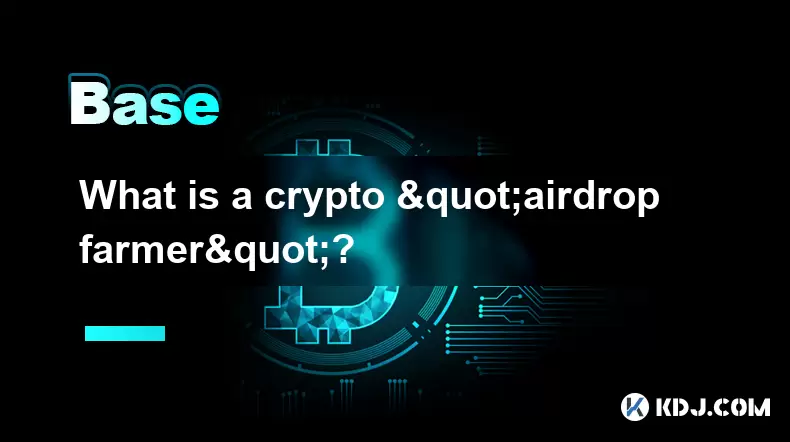-
 Bitcoin
Bitcoin $115900
-2.34% -
 Ethereum
Ethereum $3690
1.00% -
 XRP
XRP $3.109
-1.80% -
 Tether USDt
Tether USDt $1.000
-0.04% -
 BNB
BNB $771.5
0.22% -
 Solana
Solana $180.1
-3.43% -
 USDC
USDC $0.9998
0.00% -
 Dogecoin
Dogecoin $0.2293
-3.53% -
 TRON
TRON $0.3141
0.87% -
 Cardano
Cardano $0.8016
-1.19% -
 Hyperliquid
Hyperliquid $43.00
-0.08% -
 Stellar
Stellar $0.4211
-2.15% -
 Sui
Sui $3.737
0.11% -
 Chainlink
Chainlink $18.06
0.04% -
 Bitcoin Cash
Bitcoin Cash $546.9
4.97% -
 Hedera
Hedera $0.2440
0.46% -
 Avalanche
Avalanche $23.60
-0.84% -
 Litecoin
Litecoin $114.7
1.44% -
 UNUS SED LEO
UNUS SED LEO $8.975
-0.26% -
 Shiba Inu
Shiba Inu $0.00001364
-0.20% -
 Toncoin
Toncoin $3.137
-0.88% -
 Ethena USDe
Ethena USDe $1.001
-0.04% -
 Uniswap
Uniswap $10.31
1.32% -
 Polkadot
Polkadot $4.013
0.02% -
 Monero
Monero $324.6
1.07% -
 Dai
Dai $1.000
-0.01% -
 Bitget Token
Bitget Token $4.515
-1.21% -
 Pepe
Pepe $0.00001225
-2.78% -
 Aave
Aave $292.1
1.36% -
 Cronos
Cronos $0.1296
2.24%
什么是算法稳定的?如何保持稳定?
算法通过供应调整和套利保持稳定性,但面临着波动性和调节性不确定性等挑战。
2025/04/16 08:28

算法稳定性稳定性是一种加密货币,旨在通过使用算法和智能合约来维持相对于特定资产的稳定价值,通常是fiat货币,例如美元,而不是得到传统抵押品的支持,例如其他加密货币或物理资产。算法稳定的稳定性是通过各种机制来调整稳定剂的各种机制来响应需求变化的各种机制,从而将其固定在目标资产上。
算法的类型
算法可以根据其维持稳定性的机制将算法稳定性分类为不同类型。这两种主要类型是重新签订稳定剂和Seigniorage共享stablecoins 。
重新重新安置稳定剂:这些Stablecoins会自动和定期地调整用户持有的代币的总供应,以维护PEG。例如,如果稳定的值的值低于目标钉,则协议可能会增加每个持有人的令牌供应,从而稀释每个令牌的值并将其带回钉子。相反,如果该值升高到PEG以上,则协议可能会减少供应。
Seigniorage股票稳定股:当Stablecoin的价值高于PEG并在值低于PEG的情况下时,它们通过发行新的令牌或股票来运行。该机制旨在平衡供求,以维持稳定的股票价值。可以将Seigniorage份额视为Stablecoin生态系统中的一种股权形式,持有人可能会获得股息或其他福利。
算法如何保持稳定性
通过经济激励措施和算法调整的结合来维持算法稳定的稳定性。这是涉及的关键机制:
供求调整:算法稳定剂的核心原理是对代币供应的操纵以抵消需求的波动。如果需求减少,稳定菌的值下降到PEG以下,则该算法可能会减少供应量以增加每个令牌的值。相反,如果需求增加并且值升高到PEG之上,则该算法可能会增加供应量以使价值降低。
重新启动机制:在重新签署稳定剂时,定期调整令牌的总供应。这可以通过称为“重新打击”的过程来完成,在该过程中,每个持有人的余额会自动增加或减少。例如,如果Stablecoin的交易低于PEG,则该协议可能会使所有持有人的总供应量增加1%,从而稀释每个令牌的价值并使其更接近PEG。
Seignierage机制:Seigniorage共享稳定的方法使用了另一种方法。当Stablecoin的价值高于PEG时,该协议可以发行新的令牌或股票,这些代币或股票出售给投资者。从这些销售中筹集的资金可用于回购和燃烧令牌,当价值低于钉子以下,从而减少供应并增加每个令牌的价值。
套利机会:算法stablecoins通常会创造有助于维持其钉子的套利机会。如果Stablecoin的交易低于PEG,则交易者可以折扣价购买Stablecoin,并以固定的利率将其转换为目标资产(例如,美元),赚取利润并减少了循环中的稳定股份的供应。相反,如果Stablecoin的交易在PEG上方,则交易者可以出售Stablecoin并购买目标资产,增加Stablecoin的供应,并将其价值降低。
算法稳定的示例
已经开发出了几种算法稳定的稳定剂,每种稳定的稳定方法都具有独特的方法来维持稳定性。这里有一些值得注意的例子:
Ampleforth(Ampl) :Ampleforth是一种重新构成的Stablecoin,根据令牌的价格每天调整其供应量。如果价格高于目标钉,则供应量减少,如果低于目标,则供应量增加。该机制旨在保持每个Ampl代币稳定的价值随着时间的流逝。
基础现金(BAC) :基本现金是一种使用三个令牌的股份股份,该股份使用三个令牌来维持其PEG:BAC(stablecoin),B股份(B股票(持有人)符合Seigniorage的一部分)和债券(当价格低于PEG时,用于回购和BAC)。该系统旨在通过供应调整将BAC的价值保持在1美元。
Terra(UST) :Terra是一种算法稳定的stablecoin,使用了一种称为“分散稳定协议”的不同方法。它通过供应调整和一个叫做Luna的姐妹令牌的结合来维护其钉子。当UST的价值低于1美元以下时,用户可以将Luna烧成新的UST,增加电源并将其值带回钉子。相反,当该值上升到1美元以上时,用户可以将UST燃烧到薄荷新的Luna,减少UST的供应并将其价值降低。
算法的挑战和风险
尽管算法稳定剂提供了一种保持稳定性的创新方法,但它们也带来了一些挑战和风险:
波动率:尽管设计了设计,但算法稳定的稳定性仍然可以体验到明显的波动性,尤其是在高市场压力时期。该算法可能并不总是能够足够快地调整供应以抵消需求的快速变化。
复杂性:算法stablecoins使用的机制对于普通用户而言可能是复杂的,并且很难理解。这种复杂性会导致混乱和不信任,尤其是如果稳定剂未能保持其钉子。
监管不确定性:算法在监管灰色区域运行,其法律地位可能从一个司法管辖区到另一种司法管辖区有很大差异。这种不确定性可能会对这些稳定者的发行人和用户构成风险。
对市场参与者的依赖:算法稳定的成功通常取决于市场参与者的行为,例如套利者和交易者。如果这些参与者未能从事必要的套利活动,则Stablecoin可能难以维持其钉子。
用于算法稳定的用例
在加密货币生态系统中,算法稳定性稳态具有多种潜在用例:
付款和交易:由于其稳定性,算法可以用作在线和离线日常交易的媒介。它们为Bitcoin和以太坊等挥发性加密货币提供了更稳定的替代方法。
分散的金融(DEFI) :算法稳定的稳定性在Defi生态系统中起着至关重要的作用,在该系统中,它们被用作贷款的抵押品,作为贷款和借贷平台的帐户,以及作为产量农业和其他Fefi应用程序的稳定价值存储。
套期保值和风险管理:投资者可以使用算法的稳定剂来对冲其他加密货币的波动。通过将其部分投资组合在Stablecoins中持有,投资者可以减少其市场波动的影响。
跨境汇款:算法稳定的稳定性可以促进更快,更便宜的跨境汇款,因为它们可以快速转移,并且成本低于传统的金融系统。
常见问题
问:算法可以用作价值存储吗?
答:是的,由于其稳定性,算法可以用作价值存储。但是,它们作为价值存储的有效性取决于基本算法的鲁棒性以及协议随着时间的推移维持PEG的能力。
问:算法是否分散?
答:许多算法的稳定剂被设计为分散的,这意味着它们在区块链网络上运行而无需中央权威。但是,权力下放的程度可能会有所不同,某些稳定的人可能具有集中的要素,例如治理或储备管理。
问:算法与其他类型的稳定剂相比,算法stablecoins如何?
答:算法与其他类型的稳定霉素不同,例如抵押稳定的稳定剂(由其他加密货币或资产支持)和菲亚特支持的stablecoins(由传统菲亚特货币支持)。算法稳定菌仅依靠算法和智能合约来维持其PEG,而抵押和菲亚特支持的稳定稳定的稳定稳定性则使用外部资产来确保稳定。
问:如果一种算法稳定杆菌失去钉子,会发生什么?
答:如果算法stablecoin失去了钉子,该协议将尝试调整令牌的供应,以使该值重新回到目标钉。但是,如果该算法未能这样做,则Stablecoin可能会经历明显的波动性,其价值可能会偏离PEG。在极端情况下,这可能会导致对稳定的信心的信心丧失及其价值的潜在崩溃。
免责声明:info@kdj.com
所提供的信息并非交易建议。根据本文提供的信息进行的任何投资,kdj.com不承担任何责任。加密货币具有高波动性,强烈建议您深入研究后,谨慎投资!
如您认为本网站上使用的内容侵犯了您的版权,请立即联系我们(info@kdj.com),我们将及时删除。
- 卡巴(Kaspa)最牢固的月份揭示了:新的数据震惊kas贸易商!
- 2025-07-26 04:30:12
- 跨境支付革命:稳定币和付款提供商领导该费用
- 2025-07-26 04:50:12
- 加密货币损失:从ZIRP到零 - 我如何损失一百万美元(以及您可以学到的)
- 2025-07-26 04:30:12
- 策略,比特币和优先股:塞勒大胆下注的纽约分钟
- 2025-07-26 04:50:12
- AI,加密和区块链:2025年最热门的趋势和见解
- 2025-07-26 04:55:11
- Ruvi AI:下一个100倍的宝石?分析其CoinMarketCap伙伴关系和代币潜力
- 2025-07-26 05:00:30
相关百科

CEFI和DEFI有什么区别?
2025-07-22 00:28:43
了解CEFI和DEFI在加密货币世界中, CEFI (集中财务)和DEFI (分散财务)代表了两个不同的金融生态系统。 CEFI是指类似于传统金融机构的平台,中央当局控制运营并管理用户资金。示例包括集中式交换,例如二元或共同基础。另一方面, DEFI是一个基于区块链技术的分散生态系统,主要是在以太坊...

如何有资格获得潜在的加密驾驶汽车?
2025-07-23 06:49:44
了解什么是加密驾驶飞机加密空调指的是将免费令牌或硬币分配到大量的钱包地址,这通常是由区块链项目使用的,以提高意识和采用。这些空调可能是出乎意料的,或者它们可能需要用户的某些合格操作。为了符合潜在的空调,用户必须了解这些事件的结构以及通常用于选择接收者的标准。项目经常向特定加密货币的现有持有人或执行某...

什么是加密“ Airdrop农民”?
2025-07-24 22:22:20
了解加密“空投农民”的作用一个加密“空投农民”是指积极参与加密货币气流以积累免费令牌的个人。 AIRDROP是区块链项目使用的促销策略,将令牌分发给广大受众,通常以提高意识或分散代币所有权。 Airdrop农民旨在通过战略性地满足这些项目设定的要求来最大化其令牌收益。这些要求可以包括诸如加入项目的电...

Sidechain和第2层有什么区别?
2025-07-20 23:35:57
了解侧chain的概念Sidechain是一个单独的区块链,该区块链平行于主区块链,通常是加密货币的主网,例如Bitcoin或以太坊。它旨在允许资产在主链和Sidechain之间牢固地移动。 Sidechain的主要目的是启用实验和可伸缩性,而不会影响主要区块链。这意味着开发人员可以测试新功能,智能...

什么是间隔链通信协议(IBC)?
2025-07-19 10:43:17
了解障碍链沟通协议(IBC)块间通信协议(IBC)是一种跨链通信协议,旨在启用不同的区块链网络之间的互操作性。它允许独立区块链可以牢固地交换数据并无信任地交换。 IBC最初是为Cosmos生态系统开发的,已成为可以在各种区块链体系结构中实现的标准。 IBC背后的核心思想是为区块链建立标准化的方法,以...

碎片如何提高可扩展性?
2025-07-20 01:21:49
了解区块链中的碎片Sharding是一种数据库分配技术,在区块链技术中越来越多地采用以提高可扩展性。在区块链的背景下,碎片涉及将网络拆分为较小,更易于管理的片段,称为“碎片”。每个碎片都可以独立处理网络交易和智能合约的一部分,从而允许多个交易在不同的碎片上同时验证。这种并行处理能力大大减少了验证整个...

CEFI和DEFI有什么区别?
2025-07-22 00:28:43
了解CEFI和DEFI在加密货币世界中, CEFI (集中财务)和DEFI (分散财务)代表了两个不同的金融生态系统。 CEFI是指类似于传统金融机构的平台,中央当局控制运营并管理用户资金。示例包括集中式交换,例如二元或共同基础。另一方面, DEFI是一个基于区块链技术的分散生态系统,主要是在以太坊...

如何有资格获得潜在的加密驾驶汽车?
2025-07-23 06:49:44
了解什么是加密驾驶飞机加密空调指的是将免费令牌或硬币分配到大量的钱包地址,这通常是由区块链项目使用的,以提高意识和采用。这些空调可能是出乎意料的,或者它们可能需要用户的某些合格操作。为了符合潜在的空调,用户必须了解这些事件的结构以及通常用于选择接收者的标准。项目经常向特定加密货币的现有持有人或执行某...

什么是加密“ Airdrop农民”?
2025-07-24 22:22:20
了解加密“空投农民”的作用一个加密“空投农民”是指积极参与加密货币气流以积累免费令牌的个人。 AIRDROP是区块链项目使用的促销策略,将令牌分发给广大受众,通常以提高意识或分散代币所有权。 Airdrop农民旨在通过战略性地满足这些项目设定的要求来最大化其令牌收益。这些要求可以包括诸如加入项目的电...

Sidechain和第2层有什么区别?
2025-07-20 23:35:57
了解侧chain的概念Sidechain是一个单独的区块链,该区块链平行于主区块链,通常是加密货币的主网,例如Bitcoin或以太坊。它旨在允许资产在主链和Sidechain之间牢固地移动。 Sidechain的主要目的是启用实验和可伸缩性,而不会影响主要区块链。这意味着开发人员可以测试新功能,智能...

什么是间隔链通信协议(IBC)?
2025-07-19 10:43:17
了解障碍链沟通协议(IBC)块间通信协议(IBC)是一种跨链通信协议,旨在启用不同的区块链网络之间的互操作性。它允许独立区块链可以牢固地交换数据并无信任地交换。 IBC最初是为Cosmos生态系统开发的,已成为可以在各种区块链体系结构中实现的标准。 IBC背后的核心思想是为区块链建立标准化的方法,以...

碎片如何提高可扩展性?
2025-07-20 01:21:49
了解区块链中的碎片Sharding是一种数据库分配技术,在区块链技术中越来越多地采用以提高可扩展性。在区块链的背景下,碎片涉及将网络拆分为较小,更易于管理的片段,称为“碎片”。每个碎片都可以独立处理网络交易和智能合约的一部分,从而允许多个交易在不同的碎片上同时验证。这种并行处理能力大大减少了验证整个...
查看所有文章

























































































